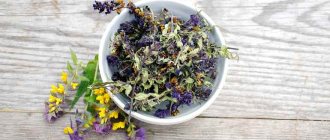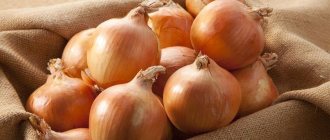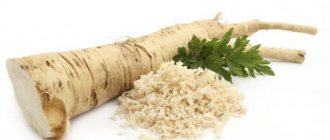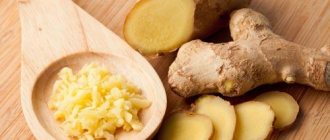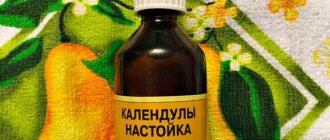- In its own juice.
Everyone knows about the healing properties of fireweed. The leaves and flowers of the plant are used in the treatment of various diseases. It is also popular due to its excellent taste, which goes well with other ingredients when preparing drinks. But to obtain real Cyprus tea, it is important to properly prepare the raw materials.
Fermentation of fireweed tea must be carried out before drying. Of course, you can use fresh leaves. The infusion has a rich and fragrant aroma. But when brewing fermented raw materials, tea acquires incredible notes and an absolutely fantastic taste.
What is fermentation?
Fermentation is an important stage in the production of fireweed tea at home. Represents the process of leaf fermentation:
- During the procedure, chemical transformations occur in the plant cells. Enzymes interact with oxygen. Oxidation occurs, providing an improvement in taste and aroma.
- When fermented at home, the microorganisms that are found in the leaves of fireweed are activated - prebiotics begin to multiply. It is for this reason that raw materials collected from fields or forests should not be washed.
- When the leaves curl, prebiotics combine with plant juices - they feed and actively reproduce. When sent to certain conditions, a fermentation procedure occurs. Finish it at the right time.
- The processing ends with final drying at elevated temperatures.
Prepared and properly brewed fireweed tea has a bright color and aroma.
What is Ivan-tea
The leaves of the plant can be found almost throughout Russia, since its seeds easily scatter over long distances. Most often it appears near bodies of water, in coniferous forests, in garden plots and even near asphalt roads.
The leaves of this plant were used to treat ailments in times when medicines had not yet been invented.
The botanical name is Fireweed angustifolia, but popularly Ivan tea is called Mulberry, Elushnik, Ivanov tea, Red color, Weeds, Koporye tea, willow grass or fireman. It takes root well in areas of fires; other plants actively grow in areas with fallen fireweed leaves.
You can find Ivan tea everywhere, since its seeds easily scatter over long distances, populating large areas.
The main thing that makes Ivan tea stand out is its composition, which differs from other caffeine-containing drinks. It does not contain harmful elements such as caffeine, oxalic acid or purine bases that disrupt metabolism.
To make the drink from this plant better quality, a special technology for its preparation is used.
This unique herb contains a large number of beneficial substances that have a positive effect on the human body:
- vitamin C (large amounts collected from the above-ground part of the plant);
- B vitamins;
- organic acids, gallic acid;
- pectin, lectins, tannins (up to 20%);
- macro- and microelements (copper, iron, manganese, phosphorus, calcium);
- polysaccharides, coumarins, phytosterols.
Fermentation is the process of fermenting the leaves of a plant used to prepare a drink.
Tannins and a large amount of mucus have an enveloping effect. Tannin has anti-inflammatory and antispasmodic properties, and plant fibers improve the functioning of the digestive system. The dried herb is used as an analgesic and sedative. Regular consumption helps solve problems with the genitourinary system and acts as a prevention of tumor growths. In addition, the tea drink improves blood composition, reduces intoxication in the body, normalizes blood pressure, relieves insomnia, and effectively fights viral diseases.
The procedure is performed over a period of several hours to several days.
For reference! Most of the healing properties of Ivan tea are similar to baking soda, since the herb often grows on the ashes of peat bogs and forest fires, which is also alkali.
Fermentation stages
Ivan tea contains a record amount of useful substances. Most of them do not dissolve when they enter the body. This procedure allows you to transform all complex elements for 100% assimilation.
Fermented fireweed tea: how to make it correctly? It is important to follow the following sequence:
- Collection of leaves. This must be done after the dew has disappeared. The flowers are harvested separately and added to the already processed raw materials.
- Withering is laying out plant parts on fabric, paper or wooden boards in a dark place. The finished leaves should bend well, but not break under pressure.
- Extracting juice using the chosen method.
- Direct fermentation.
- Final drying.
Important! When drying, we do not use newspapers. The printed text remains on the surface of the leaves and then gets into the brewed tea. This does not make the drink any healthier. It is strictly forbidden to wash the raw materials before this - microorganisms involved in fermentation may be removed.
Blank
Preparing tea begins with collecting leaves. Come to the place where fireweed grows. Usually it is immediately noticeable by its pink flowers, and it grows in large tracts; collecting it is a pleasure. When collecting the plant, you need to slightly hold it with your hand from above, and with the other hand you need to collect the leaves from the stem, moving from top to bottom. Be careful not to damage the stem or flowers.
When harvested this way, the leaves will grow back and the plant will flower and produce seeds. If you want to make tea with inflorescences, collect them separately, since the temperature of their processing is different and the process itself is slightly different . There is no need to wash the leaves after picking, just try to sort them out and remove bugs and snails from them - they will not go into tea.
You may also be interested in: Preparing Ivan Tea for the winter
Some believe that Ivan tea should be prepared on certain days, according to the lunar calendar. It is believed that preparation carried out during the full moon produces tea that nourishes male strength. And vice versa, on new moon days, preparing fireweed tea produces a drink that allows women to maintain beauty and health, helps to get pregnant and give birth to a healthy child.
In its own juice
Elementary technique. For execution, all prepared raw materials are divided into two parts. One of them is processed in a juicer, and the other is placed tightly in a deep bowl. We follow step by step:
- The resulting juice of narrow-leaved fireweed is poured onto the stacked sheets.
- The pan or other container is covered with a lid that is slightly smaller than its size.
- Any weight pre-wrapped in film or fabric is placed on top to preserve the purity of the raw material.
Thus, we defend the “material” for 1-2 days. After the expiration date, fireweed tea is dried at a temperature of 90-100 degrees.
Why fermented tea is better than unfermented tea
The basic fermentation conditions come to us from eastern tea traditions; they date back to the 18th century and have remained virtually unchanged since then. It was the Chinese who were the first to understand how important it is to properly ferment fireweed and why it is necessary at all.
By the way, Koporye tea became much more popular precisely after people learned to ferment it. This process improves the taste and aroma properties of the plant. Thanks to this, herbal raw materials can be stored for a long time in a form suitable for use; they do not mold or deteriorate.
Different fermentation depths make it possible to obtain drinks with different properties, all of which are beneficial for the body in their own way. Brewed tea has a slight invigorating effect and saturates the human body with valuable vitamins and compounds. Naturally, only if the leaves were fermented correctly. Their production requires compliance with certain rules.
There is no caffeine in fermented fireweed, but there is a lot of protein (several times more than in unfermented fireweed)
If we describe the fermentation of fireweed step by step, it goes through the following stages: collection, sorting, drying, processing, fermentation and drying. Each technological step has its own characteristics that must be observed.
Preparing the leaves
The success of fermenting Cyprus tea depends on the correct collection of the plant and its preparation. The importance of these stages in creating a tea drink cannot be underestimated.
Angustifolia fireweed is known as fireweed. For harvesting, it is collected in the summer, as soon as the plant begins to bloom. The flowers need to be picked separately, they are dried and then added to the leaves.
To make the leaves process faster, you need to let them wither. It is not advisable to wash the raw materials (otherwise you will remove beneficial probiotics from them), you just need to sort them out and clean them of bugs or debris that accidentally got in during collection.
The plant material is laid out on a clean, dry surface in a thin layer and stirred from time to time. It is necessary that fireweed should be in a dark, well-ventilated place. In dry weather, the leaves are dried for 12 hours, and in cold or wet weather, this stage takes a day.
Alternatively, you can put the leaves in the freezer for a while - this is an excellent substitute for drying them.
After this, the raw materials must be crushed in one of 2 ways: in a meat grinder or using a juicer.
If the second option was chosen, all herbal raw materials should be divided into 2 approximately equal portions. Next, place one tightly in a deep container, and pass the other through a juicer. The resulting juice will need to be poured onto the leaves placed in the vessel and everything will be placed under pressure. You should cover the leaf mass with a plate or lid of slightly smaller diameter than the container with the herbal mass, and place something heavy on top (for example, a jar filled with water). Everything is kept at room temperature for 1-2 days, then the leaves will need to be dried.
Grinding fireweed raw materials using a meat grinder is even easier than using a juicer. To do this, you need to scroll the dried leaves through a manual or electric kitchen chopper, and then tightly tamp the resulting mass into glass containers, leaving the mass to ferment.
If you add raspberry and currant leaves to Ivan tea during grinding, the tea brewed from them will not only be more aromatic, but also healthier, and even tastier.
When grinding fireweed leaves in a meat grinder, they oxidize when they come into contact with a metal kitchen appliance - this negatively affects their quality.
How to ferment tea
Ivan tea, processed by one of the above methods, is placed in a container and covered with a damp, clean cloth. Thus, its fermentation occurs. It is optimal to keep raw materials at a temperature of 24 to 26 degrees in a well-ventilated area. Such conditions will allow you to properly ferment fireweed. If the room is too hot, this process will not give the desired result. At low temperatures, fermentation slows down or stops altogether. The length of time the phytoraw material is kept under given conditions determines its quality and the depth of fermentation.
Signs of end of fermentation
It is worth understanding that the longer plant elements are kept at a given temperature, the greater the likelihood that they will begin to mold. There are 3 degrees of fermentation:
- Easy. Ivan tea reaches this condition in a period of 3 to 9 hours (depending on the temperature and the characteristics of the preliminary preparation). The brewed drink will have a yellow-brownish tint and a floral-herbal aroma.
- Average. This process takes from 10 to 19 hours. The finished drink will have a rich aroma and slightly tart taste. The tea is colored greenish and has a slight sourness.
- Deep. Fermentation duration is from 20 to 36 hours. The tea has a dark color and a pronounced tart taste. After brewing, a strong fruity aroma is felt.
Using linen fabric
A linen tablecloth is well moistened with water. The collected leaves are laid out on it in an even, thin layer. We twist the canvas into a tight, dense roll. For half an hour, you need to knead the collected fabric, as if squeezing out a wet towel. It is advisable to involve several people for this procedure.
In the process, the structure of the leaves is completely destroyed. After this, the “roll” is not unrolled, but left for subsequent fermentation for about 3 hours. As soon as the temperature inside the tube reaches 37 degrees, the procedure is considered complete. This can also be understood by the characteristic aroma of fermented fruit.
The final stage of fermentation includes placing the raw materials in glass containers followed by compaction. The container is closed with a lid and set aside to infuse for 36-40 hours. If you store the jar in a cool place, the time may increase significantly.
Fermentation
Then the actual fermentation begins. Take a deep bowl that will fit all your leaves. If you rolled them by hand, put pressure on top; if you passed them through a meat grinder, do not put anything. Cover the container with a cotton or linen cloth, wet it and place it in a warm place.
It is believed that the optimal temperature for fermentation is 22-26 degrees. The temperature should not be more than thirty and less than fifteen degrees.
Fermentation time depends on the processing method, temperature, humidity in the room, container volume and what kind of tea you want to get.
Light fermentation produces tea with a pronounced aroma but a weak taste. The time for such fermentation is from four to six hours. The average fermentation time lasts from twelve to sixteen hours. The result is tea with sourness, moderate taste and a pronounced but not strong aroma.
Deep fermentation produces tart tea, without sourness, with a weak aroma. The deep fermentation process takes from one to three days. The most important thing in the fermentation process is not to overcook the tea. Otherwise, it may begin to mold and will have to be thrown away. For the same purpose, try to water the fabric only with clean water and thoroughly wash the dishes in which the fermentation process takes place .
In a glass jar
One of the most common methods. To obtain fermented raw materials, you need to follow a few simple steps:
- The leaves are pre-withered.
- Roll it up until the juice comes out.
- Place in a glass container, compacting tightly.
- Cover the top of the container with a damp cloth.
- Leave in a dark place to ferment for about 36 hours.
- After the expiration date, the raw materials are taken out and laid out on a baking sheet for final drying in the oven at a temperature of 90-100 degrees.
With this fermentation method, the leaves can be given any shape.
Note. You can prepare the leaves for processing in another way - placing them in bags and placing them in the freezer. Ice crystals change the structure of the raw material. After the leaves are removed and “warmed” to room temperature, they can be easily rolled up.
Collecting leaves
You should also pay attention to this point, because otherwise all the efforts made may be in vain. And here are some tips:
- It is necessary to collect the upper flowers and leaves (seeds are not needed);
- do this no earlier than ten o’clock in the morning, because there will still be dew on the grass;
- It is not recommended to collect in hot weather, as everything will wither;
- When putting leaves in a basket or bag, it is important to pay attention to ensure that there are no insects on them.
Method 1 - the fastest and easiest
This is fermentation in its own juice under pressure. First, you need to divide all the raw materials into two parts. The first is sent to the juicer to obtain juice, the second is placed in a pan, preferably made of metal ceramics. After the grass is laid, the juice from the first handful is poured on top, then some kind of lid is placed, smaller than the diameter of the pan. Something very heavy is placed on it. It can be stones or bricks, weights, etc., but it must be pre-wrapped in a bag or film. In this state, the future tea is left for three days - this is how long the fermentation will last. As a result, you will get slices of fireweed, which then need to be dried at a temperature of +90 degrees.
You might be interested in Nursing mothers: Babushkino Lukoshko tea
Method 2 - labor-intensive, but guaranteeing excellent results
Fermentation
- You need to take a canvas or linen tablecloth and wet it. Squeeze so that it is not wet, but moist. If there is little fireweed, it is better to take a smaller piece of cloth and moisten it with water from a spray bottle. Humidity is necessary so that the matter does not take away the sap of the plant.
- Fireweed leaves are placed on top, but the layer should be no more than three centimeters.
- When everything is ready, you need to roll the fabric like a roll, the main thing is that it turns out very tightly.
- The roll needs to be rewound with something, for example, a tourniquet or a simple rope. After this, the most difficult process begins - for half an hour you need to crush the leaves with your hands, twisting the twist in different directions. During this manipulation, the cellular structure of the leaves is destroyed.
- The leaves are left for 2-3 hours, during which primary fermentation occurs. During this period, it is necessary to regularly check the temperature of the “roll”. If it is above 37 degrees, fermentation is completed. Having unrolled the fabric, you will feel an unusual but pleasant aroma - like a pear compote that has fermented. The leaves are wrinkled, and if you press on them, you will hear a cracking sound. Fermentation continues:
- Take plastic buckets or glass jars, place fireweed in them as tightly as possible and close with a lid. The next stage of fermentation begins.
- On average, the second stage of fermentation lasts from 36 to 40 hours. However, if you want to get tea with a more subtle taste, this time can be increased, but you will need to move it to a cool place.
- Ivan tea collected in the second half of summer is already considered late, so it requires an additional fermentation step. The raw materials are taken out of the container and thoroughly kneaded with your hands until the juice comes out. Kneading with your hands is quite difficult, and you don’t always have the strength, desire and time to do it. The manual process in this case can be replaced by mechanical action. In other words, pass it through a special electric grinder or a meat grinder screw, after removing the knife. But, as already mentioned, mechanical action will make the tea not as tasty and healthy as if you do this manipulation with your hands.
- The container with crumpled fireweed must be covered with a damp cloth and left in room conditions for 6-8 hours.
Drying
When fermentation is complete, you need to immediately begin drying. The oven is heated to a temperature of 100 degrees, and while it is heating up, you need to take a baking sheet and spread the fireweed on it. It will take one and a half to two hours to dry. If desired, you can increase the temperature at the end of this process.
It is important to stir the leaves regularly and not close the oven door all the way. Also, if possible, place ceramic facing tiles or a couple of red clay bricks under the baking sheet, at the bottom of the oven, to stabilize the temperature.
In general, the most ideal option for drying is a real Russian oven, which has a positive effect on the healing properties of tea. In particular, if you put a brick in the oven, then conditions will be formed in it somewhat similar to those in the oven.
The dryer can also be made from a special heating film for the sauna. To do this you need the following:
- Place a container, it can be a rectangular wooden box;
- Spread a film on it with a working temperature of 80 degrees;
- Lay calico on top.
Under such conditions, Koporye tea is dried for 12-16 hours. When it is ready, you need to wrap it in paper, put it in a container, cover it with a lid and place it in a dark place. If the tea is tiled, it will last for decades; crumbly ones will last about three years. It is noteworthy that with age, fireweed only becomes better, tastier, more aromatic and healthier. Therefore, you should not worry about its properties, which, as it seems, may be lost, since dry fermentation will occur all this time.
You might be interested in Monastic tea for smoking
Method 3 - the simplest and most common
After collection, the raw materials are poured into the shade and wait until the leaves and flowers wither a little. After this, the leaves are thoroughly crushed, rolled between the palms, and placed tightly in large glass jars. They are closed not with a lid, but with a damp cloth, and left in room conditions for 36 hours.
The fermented mass is taken out of the containers and dried at a temperature of 95-100 degrees in the oven. At the same time, you can give it a shape: round, like Puer, or rectangular, in the form of a large tile, reminiscent of chipboard, as they once did in Rus'. It is difficult to make a very large one, but even a beginner in this matter can create a medium-sized or small one.
How to do it? For fermentation, the raw materials are placed not in jars, but in plastic square (or other shaped) containers and form a bend, as already described in the first method. But in this case, it is necessary to dry it in an electric oven, where there is both upper and lower heating.
During the drying process, you need to stir the loose tea and turn the tiles over. Thanks to this, you can determine the color of the future tea. Readiness is determined by appearance - for crumbly, and by weighing - for tiled. In the latter case, the ratio of dry tea to wet mass should be 1:5.
Ivan tea should be stored in a dark place, in a glass or plastic container with a tight-fitting lid. A prerequisite is that it should not be exposed to sunlight. Fireweed prepared in this way will be stored for approximately three years.
Through a meat grinder
This method is in demand. When using it, you do not need to make any serious efforts, and the maximum amount of juice is released. You can use any meat grinder, but with a large attachment.
Dried leaves are sent to the unit in small batches. The result is small granules. If you add currant or raspberry leaves to the fireweed at the grinding stage, the finished tea will be much more aromatic and healthier. The prepared raw materials are also placed in a separate container, pressed by hand and covered with a damp cloth for fermentation (standard time).
